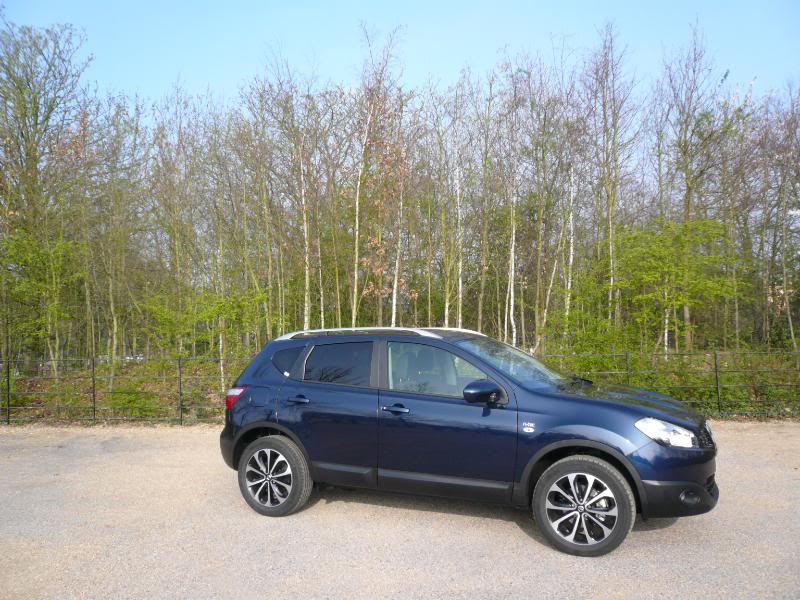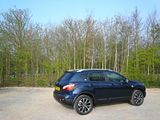

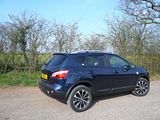
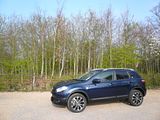
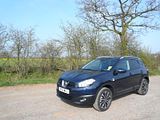
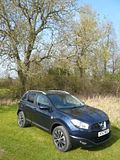
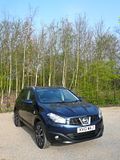
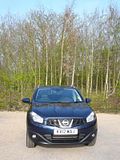
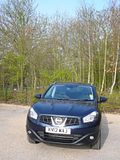

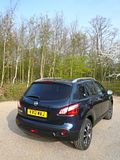
The best-selling car in March 2012 in the Irish market was Nissan’s Qashqai, which captured an impressive 8.9% share, nearly double that of the next most bought car, the VW Golf. Whilst this is not the case every single month, it is no flash in the pan, as the Qashqai has been a huge success for Nissan. When the Japanese giant decided for Europe to replace the largely unloved Almera, their C-segment medium sized hatchback, not with an updated “more of the same” but with a cross-over type vehicle, it was clearly a gamble. However, this has definitely turned out to be a gamble that has paid off, as right across Europe, the Qashqai sells strongly, attaining 12th place in the pan European sales charts, with over 216,000 new examples sold in the past 12 months, a feat never achieved by its predecessor. In the UK, the Qashqai regularly makes the top ten best seller list, a feat not achieved by a Nissan since the Sunny of 1983, easily beating cars such as the Renault Megane, Peugeot 308 and compatriot Toyota Auris, so clearly its appeal is right on the money for many people. I had my first experience of a Qashqai last summer when I spent a weekend driving one of the 7 seater +2 models around the Swiss Alps and came away impressed and clearly able to see why this car has done so well. Arriving at dark o’clock at Hertz’ Heathrow facility, I found a brand new example of a UK spec car allocated to me. As this was the regular sized 5 seater and with a different engine from the 2.0 petrol powerplant that had featured in the Swiss test car, I was interested to renew my acquaintance with the vehicle and see if my positive conclusions from last summer were still valid.
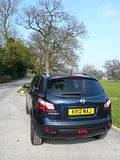
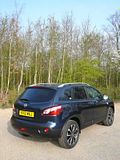

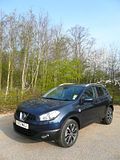


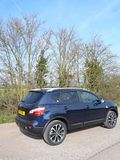
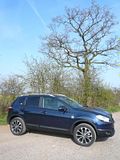
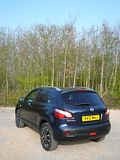

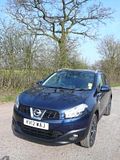

First shown in 2006, the rather oddly named Qashqai (known as the easier to spell Dualis in Australia and Japan) went on sale in February 2007, with Nissan hoping for sales of in excess of 100,000 units a year. By the end of 2009 more than half a million had been sold, and in an effort to keep interest in the model at this level, a mild facelift was made to the car in early 2010. The most obvious visual change was a new grille, and the change to LED rear lights, but under the skin alterations were made with ESP made standard across the range, as well as alterations to the dashboard and the addition of more sound-proofing. Since then, the engines have been updated in an effort to reduce fuel economy and emissions, both important factors for many prospective purchasers. Including the slightly elongated 7 seater +2 cars, there is now an extensive range of models available in 4 different levels of trim, with the option of four wheel drive and a range of petrol and diesel engines, manual and automatic gearboxes. Whilst most of the emphasis on Europe is on the diesels, it was a 1.6 litre petrol engine that powered my test car, which was in the slightly bizarrely named n-tec+ (all lower case) trim.
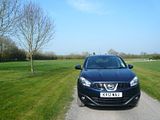

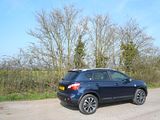
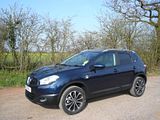
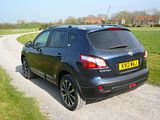
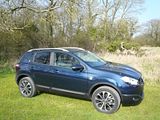
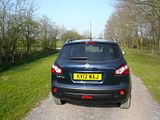
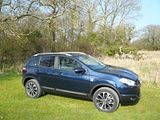
The 1598cc petrol engine is the least powerful of those available in the Qashqai, and with an output of just 115bhp, you might imagine that it would struggle in a car of this size and weight. Pleasingly, and not withstanding the fact that the test car had only done 86 miles when I got in it for the first time so doubtless everything was still mechanically a little tight, it proved not to be quite the sluggard the figures might suggest. The engine is devoid of any character, but then that’s not really the purpose of this car, but it is willing, smooth and refined. Five forward gears are available on manual Qashqai. The gearshift proved very precise with quite a narrow gate and little movement of the lever between gears. Just as well it is so pleasant to use as I find it needed it quite a lot to get the best of the Qashqai, though thankfully, this car is less penalised with emissions-maximising tall gearing than many mid-sized petrol powered cars of current times. The Nissan certainly is not fast, but nor is it worryingly slow, proving well able to keep up with the flow of traffic, and with just enough oomph to accelerate out of harms way or a slower vehicle when the occasion demands. It is still decently economical, though, returning 39 mpg on my test, the majority of which was, it has to be admitted, a steady motorway cruise down the M4. Driven in such circumstances, it is road noise which is most evident, with just a faint rustle from the air passing over the car and the engine note definitely comes in third place. Clearly the extra sound deadening added in the 2010 facelift helped. The steering is light, but it has some feel, thankfully. All the same, this is not a car that is going to worry the engineers at Ford from a driving enjoyment point of view. However, the Nissan is agile enough, does not lean much on the corners and did not understeer unduly either. Despite the relatively large 18″ wheels, it still rides well, with the many different surfaces of the M4 proving not to be an unduly stern test. The brakes are good, and there is a conventional pull-up handbrake between the seats. A combination of a higher than average driving position, plenty of glass and the very useful rear camera that is included in the n-tec+ specification meant that manoeuvering and parking the Qashqai was no challenge.

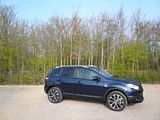


Whilst never likely to win prizes for design flair, the interior is neatly designed and made from decent quality materials, that fit together very well. It does look far better than some of the cheap plastic that used to feature in all Japanese cars until recently (and has not yet completely disappeared from all rivals). The main dash moulding is similar in texture to that found in the last generation Focus, proving far softer and squashier when you touch it than the visual appearance would suggest. The majority of the dashboard and interior trim is black, but there are silver trim accents which surround the central air vents, and which feature on the steering wheel and the door grabs on the door trim and the gearlever surround. The main dials, of which there are two – speedo and rev counter, augmented by two smaller ones for fuel level and water temperature – are grouped together under a cowl directly in front of the driver. Along with the other data displays, there is a discrete “change up” indicator, comprised of an upwards pointing arrow which appears next to an icon of a gearlever. It proved less irritating than in some other cars and did seem to recognise that you might want to exceed 1800rpm at least when accelerating! Most of the minor controls are operated from the two column stalks. After three weeks of re-adjusting to the old standard of indicators on the right and wipers on the left, which is still the norm for Australian market cars, the European standard had me wipe the screen a couple of times when I wanted to signal a left or right turn. Lights are operated by twisting the end of the indicator column stalk. The centre of the dash comprises a couple of high set circular air vents, and then a compact touch sensitive display screen which operates the satellite navigation and shows the reversing camera images, with the controls for the audio unit around the side of this unit. The rotary knobs and buttons for the climate control are in the layer below this. A series of buttons on the spokes of the steering wheel repeat some of the audio unit functions and also cycle between different displays functions for the on-board computer. It all proved utterly intuitive to use.
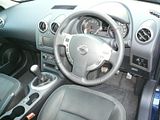
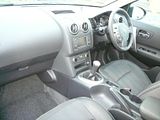
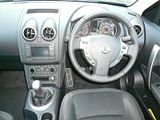
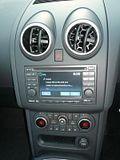


Although you did sit that bit higher in the Qashqai than in a Focus or a Golf, you are not aware of this when you open the door and clamber on board. Once there, the front seat proved a little disappointing. Adjustment is all manual, with two cranks on the side of the seat, the front of which alters the height and the second allows the backrest to recline in a series of graduated steps, but using these to get the correct driving position was not the problem, it was the shape and size of the seat itself, which seemed rather on the flat and meagre side. The longest journey time I had with the Qashqai was just under 2 hours and it did not prove uncomfortable, but I felt sure that some additional side support would have been welcome, and on twisty roads, I suspect that the passenger would long for something to cling on to. At the least the driver has a steering wheel for that purpose.
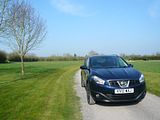
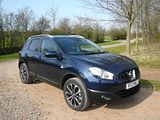

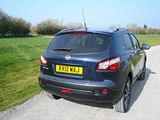


In the 7 seater +2 model, there is a very clear choice between using the third row of seats or having space for some luggage. Use all 7 seats and the boot is as meagre as in any of the 7 seater cars of this size. With the 5 seater model as tested here, no such choice is available. What you get is a conventional row of rear seats which would easily accommodate two adults and without undue discomfort at third, who would find perfectly acceptable quantities of legroom and thanks to the higher roof more than ample head room, and behind the seat a good sized boot, which would easily have swallowed far more luggage than I needed it to house. More space for things can be generated by folding the asymmetrically split rear seats forward and in this mode, the carrying capacity is commodious indeed. The cabin is reasonably provided with space for odds and ends, with a useful glovebox, moderate sized door pockets, quite a deep space under the centre armrest and quite a deep but narrow cubby recess on the lower part of the centre of the dash in front of the gearlever. There is a cupholder sized well on the centre console where on 4 wheel drive models the control for this is located.

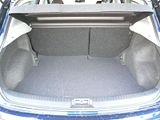
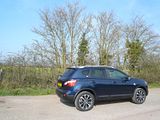

The test car was badged n-tec+, which is the third level of trim in the 4 model UK range, sitting above the Visia and Acenta and below the top spec Tekna. With a starting price for the 2WD model of £19845, you would hope that it is decently well equipped, as it is. Over and above the Acenta, you get 18″ alloy wheels, silver roof rails, the all-round parking assist feature with a colour display for images of the reversing camera, Nissan Connect which encompasses satellite navigation with a CD unit and Bluetooth, rear privacy glass, For an extra £1300, if you upgrade to the Tekna you get heated leather seats, a 7 speaker Bose sound system, xenon lights and “intelligent key”. The entry level Visia starts at £16,495, some £1500 less than the mid spec Acenta, and this one comes with 16″ rather 17″ alloys, and foregoes the dual zone climate control, auto-sensing wipers and lights, cruise control, parking sensors, a lumbar support for the driver’s seat and front fog lights. Stop/Start is available as a cost option. Spend your £250 and you get a 5 g/km CO2 reduction. For the 1.6i petrol cars, this takes them from 144 to 139 g/km, which does seem worthwhile. It was not fitted to the test car, so I cannot comment on how Nissan’s system works in practice. Four wheel drive is only available on the 2 litre petrol and diesel cars in the UK.


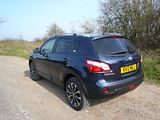
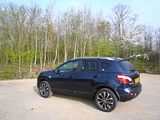
I liked the Qashqai. It is not exciting, but it is competent, and you can easily see why it has sold so well. With a good standard of build quality, Nissan levels of reliability, and oodles of practicality, it clearly meets the needs of many 21st century families. No wonder that another manufacturer whose current C-segment offering has failed to succeed in the sales charts, Fiat, is rumoured to be heading in a similar direction with its next family car offering. There’s no doubting that a top spec car looks pricey, at over £27,000 which is S-Max money and a bigger car, but choose a more restrained trim level, lower down the range and you have a honest motor car that will deliver just what is called for.
2012-04-20 14:26:11























































